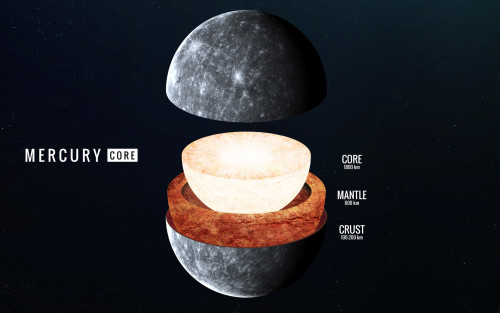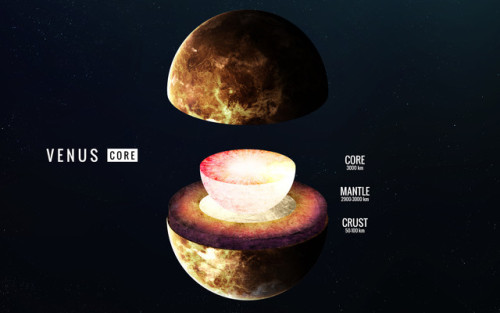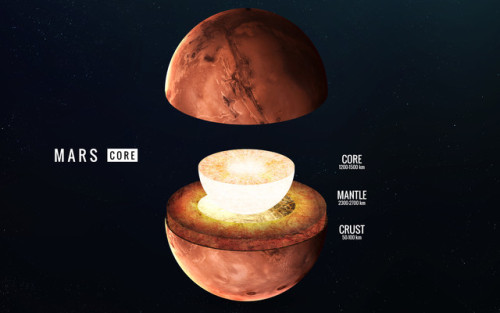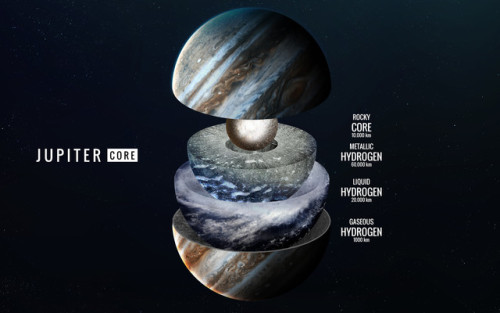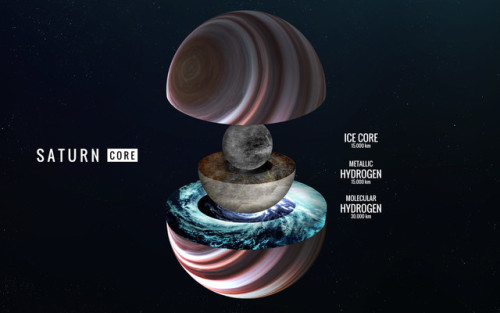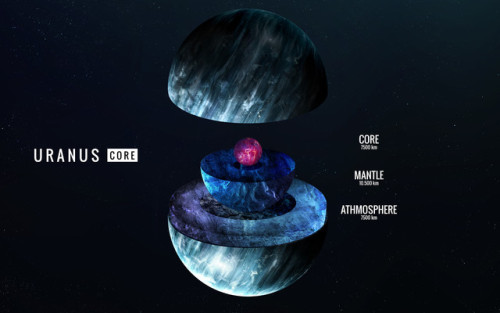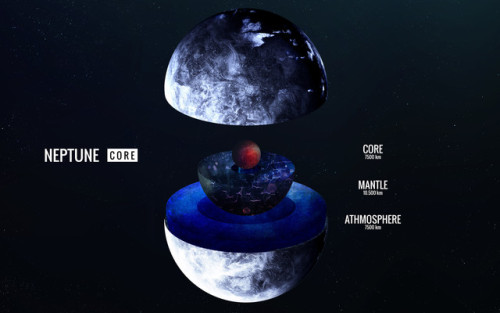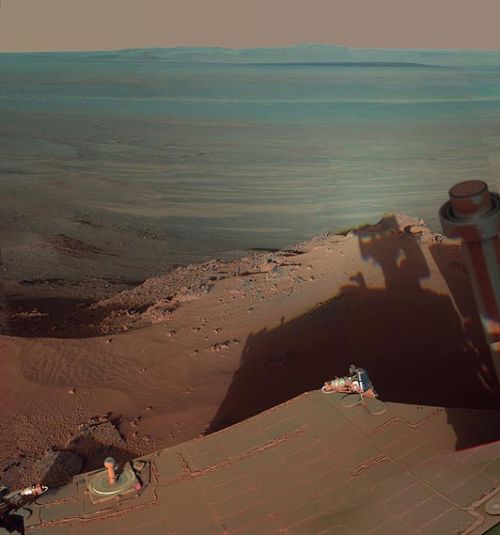SpaceX Dragon Spacecraft Departs Space Station
SpaceX Dragon Spacecraft Departs Space Station
SpaceX - CRS-10 Dragon Mission patch. March 19, 2017
Image above: The SpaceX Dragon spacecraft was released from space station at 5:11 a.m. ET on March 19 after delivering more than 5,500 pounds of cargo. Image Credit: NASA TV. Expedition 50 astronauts Thomas Pesquet of ESA (European Space Agency) and Shane Kimbrough of NASA released the SpaceX Dragon cargo spacecraft from the International Space Station‘s robotic arm at 5:11 a.m. EDT.
U.S. Commercial Cargo Ship Departs the International Space Station
With the spacecraft a safe distance from the station, SpaceX flight controllers in Hawthorne, California, will command its deorbit burn around 10 a.m. The capsule will splash down at about 10:54 a.m. in the Pacific Ocean, where recovery forces will retrieve the capsule and its more than 5,400 pounds of cargo. The cargo includes science samples from human and animal research, external payloads, biology and biotechnology studies, physical science investigations and education activities. The deorbit burn and splashdown will not be broadcast on NASA TV.
Image above: Image above: The SpaceX Dragon spacecraft released (Archive image). Image Credit: NASA. NASA and the Center for the Advancement of Science in Space (CASIS), the non-profit organization that manages research aboard the U.S. national laboratory portion of the space station, will receive time-sensitive samples and begin working with researchers to process and distribute them within 48 hours of splashdown. Dragon, the only space station resupply spacecraft able to return to Earth intact, launched Feb. 19 on a SpaceX Falcon 9 rocket from historic Launch Complex 39A at NASA’s Kennedy Space Center in Florida, and arrived at the station Feb. 23 for the company’s 10th NASA-contracted commercial resupply mission. Related links: Center for the Advancement of Science in Space (CASIS): http://www.iss-casis.org/ NASA TV: https://www.nasa.gov/multimedia/nasatv/index.html SpaceX: https://www.nasa.gov/spacex Space Station Research and Technology: https://www.nasa.gov/mission_pages/station/research/index.html International Space Station (ISS): https://www.nasa.gov/mission_pages/station/main/index.html Images (mentioned), Video (NASA TV), Text, Credits: NASA/Hayley Fick. Best regards, Orbiter.ch Full article
More Posts from Fillthevoid-with-space and Others
September 15
This one is technically not yet history, because at the time of posting, the little craft has about half an hour left to go. That said, let’s proceed.
In 2017, NASA’s Cassini space probe ended its twenty-year mission at Saturn. After a nearly-seven-year-long journey there, it orbited the ringed planet for 13 years and just over two months, gathering copious amounts of information about the planet, said rings, and many of its moons. It landed an ESA probe called Huygens on Titan, the first-ever soft landing in the outer Solar System. It discovered lakes, seas, and rivers of methane on Titan, geysers of water erupting from Enceladus (and passed within 50 miles of that moon’s surface), and found gigantic, raging hurricanes at both of Saturn’s poles.
And the images it returned are beautiful enough to make you weep.
On this day in 2017, with the fuel for Cassini’s directional thrusters running low, the probe was de-orbited into the Saturnian atmosphere to prevent any possibility of any contamination of possible biotic environments on Titan or Enceladus. The remaining thruster fuel was used to keep the radio dish pointed towards Earth so the probe could transmit information about the upper atmosphere of Saturn while it was burning up due to atmospheric friction.
This is us at our best. We spent no small amount of money on a nuclear-powered robot, launched it into space, sent it a billion miles away, and worked with it for two decades just to learn about another planet. And when the repeatedly-extended missions were through, we made the little craft sacrifice itself like a samurai, performing its duty as long as it could while it became a shooting star in the Saturnian sky.

Rhea occulting Saturn

Water geysers on Enceladus

Strange Iapetus

Look at this gorgeousness

A gigantic motherfucking storm in Saturn’s northern hemisphere

Tethys

This image is from the surface of a moon of a planet at least 746 million miles away. Sweet lord

Mimas

Vertical structures in the rings. Holy shit

Titan and Dione occulting Saturn, rings visible

Little Daphnis making gravitational ripples in the rings

That’s here. That’s home. That’s all of us that ever lived.

Saturn, backlit

A polar vortex on the gas giant

Icy Enceladus
(All images from NASA/JPL)

The Cassini probe took a picture of Saturn that includes Earth in it!
Cassini has actually taken a ton of cool photos of Saturn if you want to check those out in the wake of last week’s planets podcast.

An episode late is better than none at all! Hear about satellites, space probes, orbiters, and landers through history.
Below the cut are sources, music credits, an awesome infographic showing all the satellites currently in orbit around Earth, a vocab list, and the transcript of this episode. Let me know what you think I should research next by messaging me here, tweeting at me at @HDandtheVoid, or asking me to my face if you know me in real life. And please check out the podcast on iTunes, rate it or review it if you’d like, subscribe, and maybe tell your friends about it if you think they’d like to listen!
(My thoughts on the next episode were space race history, the transit of Venus, or maybe something about the Moon landing. I’m prepping to interview a friend about her graduate-level research into the history of the universe and possibly dark matter, too. Let me know by the 8th and I’ll hopefully have the next podcast up on September 18th!)
Glossary
Clarke Belt - an area of geostationary orbit in Earth’s atmosphere, 35,786 km directly above the equator, where a satellite orbits the Earth at the same speed the Earth is rotating.
geostationary orbit - when an object orbits directly above the equator and appears stationary to observers on Earth’s surface.
geosynchronous orbit - when an object orbits Earth at an orbital period that matches Earth's rotation on its axis. From the perspective of an observer on Earth's surface, the object would return to the exact same position in the sky after a period of one day.
gyroscopes - a device consisting of several rings that spin freely around different axes. The rapidly rotating wheel has a large moment of inertia and therefore resists change from the plane in which it is rotated. Large gyroscopes allow for steady navigation of ships, submarines, and space ships. See examples in the link.
heliosheath - the outer region of the heliosphere. It is just beyond termination shock, the point where solar wind abruptly slows down and becomes denser and hotter as it presses outward against the approaching wind in interstellar space.
heliosphere - a huge wind sock-shaped bubble that extends beyond Pluto’s orbit and contains our solar system, solar wind, and the entire solar magnetic field.
lander - a spacecraft launched with the intent to land it, unharmed and fully functioning, on the surface of an object that is astronomical in nature. It is aimed at a specific target that astronomers want to learn more about and investigates the object at the surface level. It can be manned or unmanned.
orbiter - an unmanned spacecraft launched with the intent to bring it into orbit around a larger body in order to study that body. It is similar to a satellite but does not orbit Earth.
probe - an unmanned machine sent into space to collect data. It is aimed at a specific target that astronomers want to learn more about.
spacecraft - a pilot-able vehicle used for traveling in space. It can be manned or unmanned.
Van Allen Belts - belts of radiation in Earth’s atmosphere.
Transcript
Sources
Timeline of space exploration to 2013 via the National Archives
Timeline of NASA, the space shuttle, and near-Earth space flights
Space exploration timeline via Sea and Sky
Gyroscope definition via USC
Infographic on satellites launched 1950-1978 via the CalTech Jet Propulsion Lab
List of satellites via Wikipedia
A history of Sputnik via an excerpt from Paul Dickson’s book Sputnik: The Shock of the Century on PBS
“Instead of being concerned with winning the first round of the space race, Eisenhower and his National Security Council were much more interested in launching surveillance satellites that could tell American intelligence where every Soviet missile was located.”
Explorer 1 overview via NASA
Vanguard 1 overview via NASA
SCORE overview via the Smithsonian National Air and Space Museum
Pioneer lunar mission overview via the CalTech Jet Propulsion Lab
Various probe/satellite mission overviews via NASA
Australian WRESAT mission via Australia’s Department of Defence
Pioneer expeditions via NASA
Mariner 10 mission overview via NASA
Magellan mission overview via NASA
Synthetic aperture radar overview via radartutorial.edu
MESSENGER mission overview via JHU Applied Physics Lab
Mariner missions to Venus overview via the CalTech Jet Propulsion Lab
Mariner missions to Mars overview via the CalTech Jet Propulsion Lab
“The final Mariner to Mars, however, was the lab’s greatest planetary success to date.”
Mariner 9 via the CalTech Jet Propulsion Lab
Viking mission overview via NASA
Pathfinder/Sojourner mission overview via NASA
Opportunity mission overview via the CalTech Jet Propulsion Lab
Spirit mission overview via the CalTech Jet Propulsion Lab
Curiosity rover via NASA
Pioneer 10 mission overview via NASA
Pioneer 11 mission overview via NASA
Juno mission overview via the CalTech Jet Propulsion Lab
Cassini-Huygens mission overview via the CalTech Jet Propulsion Lab
Voyager mission overview via the CalTech Jet Propulsion Lab
“The Voyager message is carried by a phonograph record, a 12-inch gold-plated copper disk containing sounds and images selected to portray the diversity of life and culture on Earth.”
Voyager mission trackers via the CalTech Jet Propulsion Lab
Heliosphere definition via NASA
Heliosheath definition via NASA
New Horizons mission overview via NASA
Compton Gamma-Ray Observatory via NASA
Chandra X-Ray Observatory via NASA
Spitzer Space Telescope via CalTech
Einstein Observatory (HEAO-2) via NASA
International Ultraviolet Explorer (IUE) via NASA
International Ultraviolet Explorer (IUE) via ESA
Extreme Ultraviolet Explorer (EUVE) via NASA
Advanced Satellite for Cosmology and Astrophysics (ASCA, formerly ASTRO-D) via NASA archives
Far Ultraviolet Spectroscopic Explorer (FUSE) via JHU
Active space probe/observatory missions via NASA
Chandrayaan-1 via the CalTech Jet Propulsion Lab
Hayabusa 2 mission overview via NASA
Hayabusa-2’s twitter account
A map of every active satellite orbiting Earth via Quartz
Union of Concerned Scientists Satellite Database
Cul-de-Sac comic by Richard Thompson
“Well, there’s dust everywhere, and there’s all kinds of trash—food wrappers and broken parts of things and gloves and shoes. And gas giants and black holes and rocks and dirt. And there’s old TV shows and strange creatures and there’s unidentifiable stuff that no one can explain. And it’s expanding all the time. Toss in a few trillion stuffed toys and it’d be just like your room.”
Intro Music: ‘Better Times Will Come’ by No Luck Club off their album Prosperity
Filler Music: ‘Satellite’ by Guster off their album Ganging Up On The Sun
Filler Music: ‘Sunn’ by Radical Face off his album Sunn Moonn Eclippse. Check out the video in the album link, it’s amazing.
Outro Music: ‘Fields of Russia’ by Mutefish off their album On Draught.



Of Course I Still Love You returned to Port Canaveral earlier this morning with the SES-10 Falcon 9 first stage. Since this is the first Falcon 9 rocket to be reflown this marks the second time this particular rocket returned to port after landing. The images above were captured by remote cameras on the droneship and show the vehicle coming into land. Falcon 9 landed eight minutes after a March 30 liftoff from LC-39A at Kennedy Space Center. Extensive scorching is visible on the exterior of the rocket including the interstage and grid fins. The fins themselves were seen glowing during launch footage as the booster returned to Earth. Each fin is coated in ablative paint which helps protect the metal but the severe temperatures of reentry still cause the fins to glow. Since SES-10 was placed into Geostationary Transfer Orbit, not enough propellant remained in the first stage’s tanks to allow for a nominal reentry profile and the boostback burn was not performed. As such, the rocket came in over twice its normal landing speed and eight times hotter than flights which have a boostback burn. This particular rocket will not be reused after recovery; Elon Musk stated in the SES-10 post-launch news conference that the rocket will likely be given to the Air Force for display at either Cape Canaveral or Kennedy Space Center. P/C: SpaceX

I’m a Northern Hemisphere dweller, so I thought it would be fun to cover Southern Hemisphere stars and constellations in this episode! I also coulsnt’ resist talking about Aurora Australis and Steve, the hot new atmospheric phenomenon all the young people are talking about.
Below the cut, I have the glossary, transcript, sources, and music credits. I take topic suggestions from Tumblr messages, or you can tweet at me on Twitter at @HDandtheVoid, or you can ask me to my face if you know me. Please subscribe on iTunes, rate my podcast and maybe review it, and tell friends if you think they’d like to hear it!
(My thoughts on the next episode are Chuck Yeager, Stephen Hawking and his theories, the opposition of Mars, or famous comets. The next episode will go up May 14th or 21st!)
Glossary
Bayer designation - a way to classify stars based on their relative brightness within a constellation. A specific star is identified by a Greek letter, followed by the genitive form of the constellation's Latin name.
circumpolar - appearing to orbit one of the Earth’s poles. For stars and constellations, this means they are above the horizon at all times in certain latitudes.
irregular galaxy - an asymmetrical galaxy shape, where the galaxy lacks a central supermassive black hole.
Script/Transcript
Sources
Orion from the Southern Hemisphere via EarthSky (Mar 2017)
How to Spot Sky Landmarks: Big Dipper and Southern Cross via Space.com (Apr 2012)
Locate Cassiopeia the Queen via EarthSky (February 2018)
Small Magellanic Cloud orbits Milky Way via EarthSky (Oct 2017)
Nubecula via LatDict
Early star catalogues of the southern sky via Astronomy and Astrophysics (2011)
Catalog of Southern Stars via the University of Oklahoma
Edmond Halley via Royal Museums Greenwich
Finding south using the Southern Cross via Museum of Applied Arts and Sciences (Jan 2013)
List of 88 official constellations via the Astronomical Society of Southern Africa
Alpha Centauri system, closest to sun via EarthSky (May 2017)
Hadar is a southern pointer star via EarthSky (April 2017)
Aurora Australis forecast service
Video of aurora australis via Global News Canada (April 2018)
Aurora Steve via Global News Canada (March 2018)
Bagnall, Philip M. “Crux.” In The Star Atlas Companion: What You Need to Know About the Constellations. Springer Science+Business Media: New York, 2012 (183-7). Located in Google Books Preview [accessed May 1, 2018].
Intro Music: ‘Better Times Will Come’ by No Luck Club off their album Prosperity
Filler Music: ‘Mace Spray’ by The Jezabels off their EP Dark Storm.
Outro Music: ‘Fields of Russia’ by Mutefish off their album On Draught
It’s international dark sky week! Please enjoy this great Bortle scale.
skyglowproject What sky do you live under? Learn more at SKYGLOWPROJECT.COM
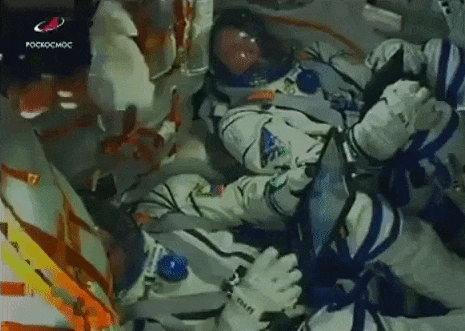
Soyuz MS-10 experiences launch anomaly; crew aborts to safe landing.
One of Russia’s most reliable launchers experienced a rare, in-flight anomaly earlier this morning, forcing the two-man crew of Soyuz MS-10 to abort the mission.
Following a normal liftoff at 4:40am EST (2:40pm local time), a malfunction in the Soyuz FG rocket two minutes into the flight forced Expedition 57 crewmembers Alexey Ovchinin and Nick Hague to abort a manual abort profile. The anomaly occurred immediately following the separation of the rocket’s four strap-on boosters and jettisoning of the Launch Escape System. However, the protective fairing covering the spacecraft during flight through the thick atmosphere was still on, and solid rocket motors attached to the fairing pulled the crew capsule away from the failing booster. Following a ballistic trajectory through the upper atmosphere, the Soyuz’s Descent module separated from the Orbital Module and payload fairing and descended to a safe landing 20 kilometers east of Zezkezhan, Kazakhstan, 34 minutes after launch. Roscosmos reported that the crewmembers experienced around seven times the force of gravity, or 7G’s, during their abort.
Recovery forces reached the landing site immediately following touchdown. Both astronauts were reported to be in good health following their ordeal, and returned to their families at the Baikonur launch site around six hours after liftoff.

Recovery forces at the Soyuz MS-10 emergency landing site. Source: Ruptly.

Soyuz MS-10 crewmembers Alexey Ovchinin and Nick Hague embrace their families following their return to the Baikonur Cosmodrome after today’s launch mishap. Credit: NASA/Bill Ingalls. This marks the first crewed launch mishap of the International Space Station program, the first crewed launch mishap since the Challenger disaster in 1986, and the first crewed Soyuz launch malfunction since Soyuz T-10 in 1983.
That incident saw the two-man crew of Vladimir Titov and Gennady Strekalov abort away from their exploding rocket shortly before its scheduled liftoff time. While no cause of the mishap is currently known, Russian authorities have begun an investigation of the incident and have temporarily grounded all future Soyuz flights. The current three-member crew of Expedition 57 is slated to return to Earth December 13, followed by the launch of Expedition 58 December 20. Following today’s anomaly, it is unclear whether Expedition 57 will remain on orbit longer, or when the next crew will launch to the station. Expedition 57 is able to remain on orbit until early January, when their Soyuz reaches its certified orbital lifetime.

Expedition 57 commander Alexander Gerst captured this image of the Soyuz MS-10 launch from the International Space Station. The anomalous nature of the launch is evidenced by multiple points of light along the ascent path. Source: NASA. Watch NASA TV coverage of the Soyuz MS-10 launch below.
P/c: NASA.
-
 fillthevoid-with-space reblogged this · 8 years ago
fillthevoid-with-space reblogged this · 8 years ago -
 atrumdeus reblogged this · 8 years ago
atrumdeus reblogged this · 8 years ago -
 jonarthan reblogged this · 8 years ago
jonarthan reblogged this · 8 years ago -
 ethelindawrites liked this · 8 years ago
ethelindawrites liked this · 8 years ago -
 llamawho liked this · 8 years ago
llamawho liked this · 8 years ago -
 ronin9gin liked this · 8 years ago
ronin9gin liked this · 8 years ago -
 jnellibg reblogged this · 8 years ago
jnellibg reblogged this · 8 years ago -
 bozont liked this · 8 years ago
bozont liked this · 8 years ago -
 motorlearner94 liked this · 8 years ago
motorlearner94 liked this · 8 years ago -
 cucumbers-spaceships liked this · 8 years ago
cucumbers-spaceships liked this · 8 years ago -
 haectemporasunt liked this · 8 years ago
haectemporasunt liked this · 8 years ago -
 seanieboy392 liked this · 8 years ago
seanieboy392 liked this · 8 years ago -
 ollie-otter1 liked this · 8 years ago
ollie-otter1 liked this · 8 years ago -
 lxstronaut liked this · 8 years ago
lxstronaut liked this · 8 years ago -
 spaceexp reblogged this · 8 years ago
spaceexp reblogged this · 8 years ago
A podcast project to fill the space in my heart and my time that used to be filled with academic research. In 2018, that space gets filled with... MORE SPACE! Cheerfully researched, painstakingly edited, informal as hell, definitely worth everyone's time.
243 posts
